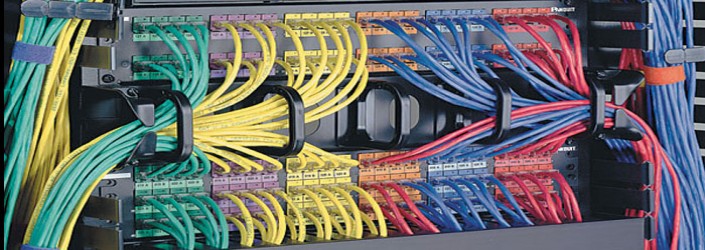Structured Cabling Standards
Network cabling infrastructure for telecommunications is a broad category that encompasses many aspects of installing cable in commercial or residential buildings. The governing board, TIA Engineering Committee TR-42, has sub-divided network cabling into a number of different categories of cable and establishing standards for each subsystem. These standards apply to cabling infrastructure in residential living spaces, data centers, commercial buildings, industrial facilities, and more. The scope of the standards include layout, distance specifications, and outlet configuration. They cover copper (such as Cat5e, Cat6) and fiber optic cabling and components, installation, field testing, administration, pathways, spaces, and proper support of the cabling.
With the ratification of the TIA 568-C.0 and TIA 568-C.1 standard, TIA defines six subsystems of structured cabling system. They are as follows:
- Entrance Facilities (EF)
- Equipment Room (ER)
- Backbone Cabling
- Telecommunications Room and Telecommunications Enclosure
- Horizontal Cabling
- Work Area
Entrance Facilities (EF)
Entrance facilities house the cables that connect with the external systems. This includes the demarcation point, hardware used to connect, hardware or protection equipment that connects to the access point.
Equipment Room (ER)
Equipment rooms hold equipment which works inside the building. This usually encompasses the main corr-connect, intermediate cross-connects, or horizontal cross-connects.
Backbone Cabling Subsystems
The backbone cabling connects the EF, ER, TR, and AP. Backbone cabling is further standardized into subsystem 2 and subsystem 3. Subsystem 2 defines Backbone to horizontal cross-connect or intermediate cross-connect. Subsystem 3 defines connection to the main cross-connect. Backbone cabling can be Cat3, Cat5e, Cat6, Cat6a, or fiber optic.
Telecommunications (TR) and Telecommunications Enclosure (TE)
The telecommunications rooms or telecommunications enclosures hold the equipment (including patch cords and jumpers) which connects the backbone cabling and horizontal cabling. It may also contain the master cross-connect or intermediate cross-connect.
Horizontal Cabling Subsystems
The horizontal cabling system connect TR or TE to single outlets on the same floor. It encompasses the cabling, terminations, patch cables and jumpers and regulates a maximum distance of 295 feet. Horizontal cabling can include Cat5e, Cat6, Cat6a, or fiber optic cable.
Work Area Subsystems
Work area (WA) components connect user hardware to the outlets of the horizontal cabling. The standard specifies a minimum of two outlets per work area.

